详情点击链接:cmip6数据处理
前言
气候变化关系到农业、生态系统、社会经济和人类生存与发展,是当今世界关注的重点问题之一。IPCC(Intergovernmental Panel on Climate Change)第6次评估报告指出,自 20 世纪 50 年代以来,从全球平均气温和海温升高、大范围积雪和冰川融化,以及全球海平面的上升可知,气候变暖已是不争的事实。
一、CMIP6中的模式比较计划
1.1 GCM

1.2 相关比较计划
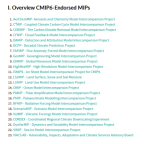
二、数据下载
2.1方法一:手动人工

2.2方法二:自动
利用Python的命令行工具

2.3方法三:半自动购物车

2
.4
裁剪netCDF文件
基于QGIS和CDO实现对netCDF格式裁剪
2
.5
处理日期非3
65天的gcm
三、基础知识
3.1 P
ython基础
-
N
umpy基础
-
S
cipy基础
-
P
andas基础
3.2
CDO基本操作
CDO(
C
limate
Data
Operator)是大气科学中常用的处理工具。
-
文件操作
-
重采样
-
统计计算
3.3X
array的基本操作
Xarray是基于Python体系的针对netCDF常用的工具,可以方便实现处理、可视化等操作。
-
N
etcdf文件的读写
-
统计计算
可视化
-
四、单点降尺度
4
.1 Delta方法
4
.2统计订正
4
.3机器学习方法
-
建立特征
-
建立模型
模型评估
-

-
4
.4多算法集成方法
五、统计方法的区域降尺度
5
.1 Delta方法
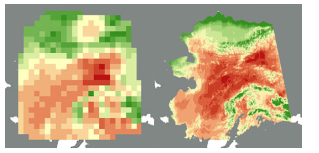
5.2
基于概率订正方法的
六、基于WRF模式的动力降尺度
6.1
制备CMIP6的WRF驱动数据
利用cdo工具对gcm的输出文件进行重新编码制备wrf的驱动数据
6.1.1
针对压力坐标系的数据制备
6.1.2
针对sigma坐标系GCM数据制备
6.1.3
WPS处理
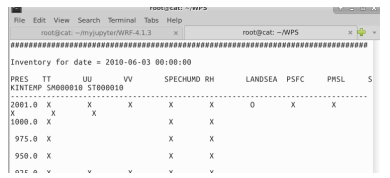
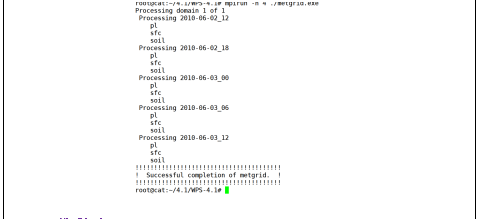
6.2
WRF模式运行

6.3
模式的后处理
-
提取变量
-
变量的统计
变量的可视化
-

七、典型应用案例-气候变化1
.1针对风速进行降尺度

7
.2针对短波辐射降尺度
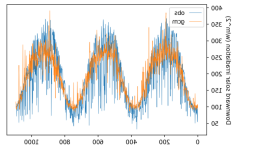
八、典型应用案例-气候变化2
ECA极端气候指数计算
-
Consecutive dry days index
-
Consecutive frost days index per time period
-
Consecutive summer days index per time period
-
Consecutive wet days index per time period
九、典型应用案例-生态领域
预估生长季开始和结束时间
1、建立气象数据与VIPPHEN遥感物候数据中生长季开始和结束
2、在未来气候情景下预估生长季长季开始、结束和长度
十、典型应用案例-水文、生态模式数据
-
SWAT数据制备
-
Biome-BGC数据
Biome-BGC是利用站点描述数据、气象数据和植被生理生态参数,模拟日尺度碳、水和氮通量的模型,其研究的空间尺度可以从点尺度扩展到陆地生态系统。
案例中以单点模拟方式制备CMIP
6
的气象数据。

catalogs :Intake-ESM可以使用的数据目录。
environments :用于NCAR / Google Cloud部署的Conda环境文件。
notebooks :用于存放Jupyter笔记本的地方。
README.md :本文档-考虑进行修改以使其成为您在GitHub上的项目的描述。
LICENSE :项目的默认(MIT)许可证文件。 您可以根据需要更改此设置。
如何使用此模板
项目负责人应遵循以下四个步骤。 这仅需要执行一次。
点击“使用此模板”按钮
为您的项目命名(考虑以“
cmip6
hack-”开头,所以类似
cmip6
hack-myproject )
提供简短说明
告诉您的队友在哪里可以找到您的存储库,并告诉他们“分叉”该项目。
初始设置完成后,每个人都希望将存储库克
CMIP6
数据名很长,出于众所周知的原因,虽然
CMIP6
提供了说明文档,我们依然无法看到,我看了一下中文互联网好像没有文章仔细说明,能看到的也是说一半就不说了,那我来吧。
只介绍
CMIP6
,需要看源文档的可以访问这个网址(需要一些黑科技):
https://docs.google.com/document/d/1yUx6jr9EdedCOLd–CPdTfGDwEwzPpCF6p1jRmqx-0Q/edit#
<mip_era>/<activity_id>/<insti
作者:杰西·贝克( )
以下论文中使用的用于处理原始数据的脚本:
贝克(JCA),加西亚·卡雷拉斯(Garcia-Carreras),布恩(Buermann),马萨姆(Marsham),JH,格洛尔(Gloror),华盛顿,斯普拉克伦(Spracklen),DV正在审查中。 亚马逊的蒸散:观测,再分析和气候模型的空间格局,季节性和近期趋势。
水文
与地球系统
科学
(HESS), ://doi.org/10.5194/hess-2020-523。
用于将原始卫星,ERA5和CMIP模型
数据处理
为统一的netcdfs的脚本
chirps_p_data_processing.py
clara-a1_radiation_data_processing.py
gleam_et_data_processing.py
grace_tws_data
《第六次国际耦合模式比较计划(
CMIP6
)评述》周天军
链接: http://www.climatechange.cn/CN/10.12006/j.issn.1673-1719.2019.193
这篇文章介绍了CMIP的发展历程,介绍了
CMIP6
的组织思路、其核心实验和23个比较子计划,读这篇文章,可以对
CMIP6
有个整体概念。文章部分截图如下:
以下是一些关于极端天气数据统计分析的外文参考文献:
1. Herring, S. C., Hoerling, M. P., Peterson, T. C., & Stott, P. A. (eds.). (2014). Explaining extreme events of 2013 from a climate perspective (Vol. 5). Bulletin of the American Meteorological Society.
2. Peterson, T. C., & Manton, M. J. (2008). Global overview of regional rainfall patterns and variability: a guide to the global precipitation climatology project (GPCP) data set. CRC press.
3. Donat, M. G., Alexander, L. V., Yang, H., Durre, I., Vose, R., Dunn, R. J., ... & Caesar, J. (2013). Updated analyses of temperature and precipitation extreme indices since the beginning of the twentieth century: The HadEX2 dataset. Journal of Geophysical Research: Atmospheres, 118(5), 2098-2118.
4. Sillmann, J., Kharin, V. V., Zhang, X., Zwiers, F. W., & Bronaugh, D. (2013). Climate extremes indices in the CMIP5 multimodel ensemble: Part 1. Model evaluation in the present climate. Journal of Geophysical Research: Atmospheres, 118(4), 1716-1733.
5. Zhang, X., Alexander, L., Hegerl, G. C., Jones, P., Tank, A. K., Peterson, T. C., ... & Klein Tank, A. M. (2011). Indices for monitoring changes in extremes based on daily temperature and precipitation data. Wiley Interdisciplinary Reviews: Climate Change, 2(6), 851-870.
6. Meehl, G. A., Karl, T., Easterling, D. R., Changnon, S., Pielke Jr, R., Changnon, D., ... & Evans, J. (2000). An introduction to trends in extreme weather and climate events: observations, socioeconomic impacts, terrestrial ecological impacts, and model projections. Bulletin of the American Meteorological Society, 81(3), 413-416.
7. Ebi, K. L., & Burton, I. (eds.). (2008). Identifying practical adaptation options: an approach to the development of adaptation measures for climate change impacts. Springer Science & Business Media.
8. Seneviratne, S. I., Nicholls, N., Easterling, D., Goodess, C. M., Kanae, S., Kossin, J., ... & Zhang, X. (2012). Changes in climate extremes and their impacts on the natural physical environment. In Managing the risks of extreme events and disasters to advance climate change adaptation (pp. 109-230). Cambridge University Press.
9. IPCC. (2012). Managing the risks of extreme events and disasters to advance climate change adaptation. A special report of working groups I and II of the intergovernmental panel on climate change. Cambridge University Press.
10. Trenberth, K. E. (2011). Changes in precipitation with climate change. Climate research, 47(1-2), 123-138.













